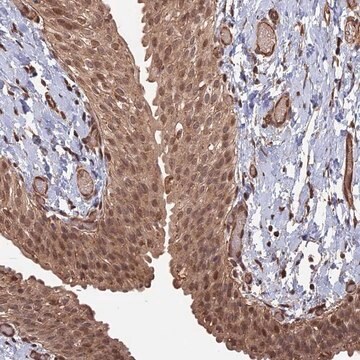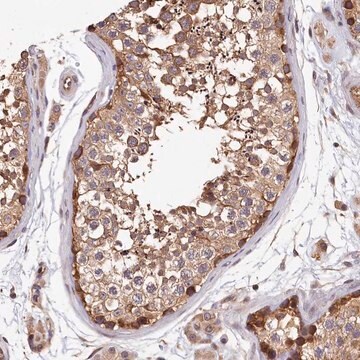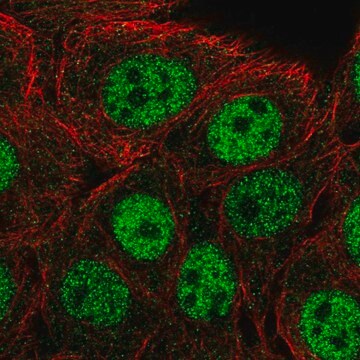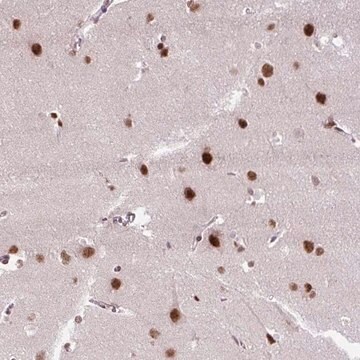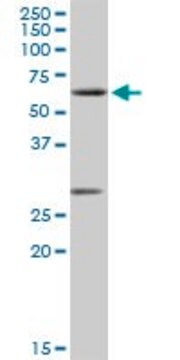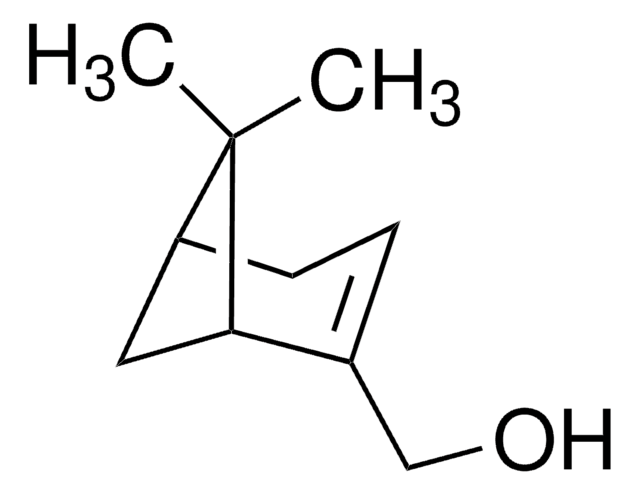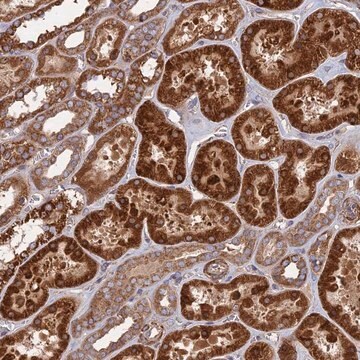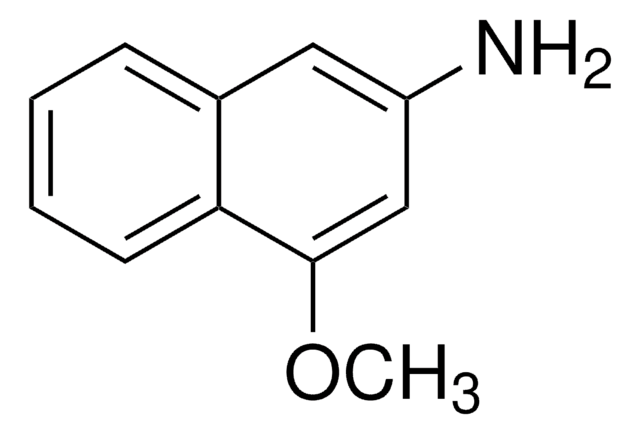ABN2290
Anti-LHFPL5
Synonim(y):
LHFPL tetraspan subfamily member 5 protein, Lipoma HMGIC fusion partner-like 5 protein, Tetraspan membrane protein of hair cell stereocilia
About This Item
Polecane produkty
pochodzenie biologiczne
rabbit
Poziom jakości
forma przeciwciała
purified antibody
rodzaj przeciwciała
primary antibodies
klon
N/A, polyclonal
masa cząsteczkowa
calculated mol wt 24.2 kDa
reaktywność gatunkowa
human
reaktywność gatunkowa (przewidywana na podstawie homologii)
monkey
opakowanie
antibody small pack of 100 μL
metody
immunocytochemistry: suitable
western blot: suitable
izotyp
IgG
sekwencja epitopowa
C-terminal
numer dostępu Protein ID
numer dostępu UniProt
temp. przechowywania
-10 to -25°C
informacje o genach
human ... LHFPL5(222662)
Opis ogólny
Specyficzność
Immunogen
Zastosowanie
Evaluated by Immunocytochemistry in HeLa cells.
Immunocytochemistry Analysis: A 1:50 dilution of this antibody detected LHFPL5 in HeLa cells.
Tested applications
Western Blotting Analysis: A representative lot detected LHFPL5 in Western Blotting applications (Yu, Z., et. al. (2020). Proc Natl Acad Sci USA. 117(47); 29894-29903).
Western Blotting Analysis: A 1:1,000 dilution from a representative lot detected LHFPL5 in HEK293 cells transfected with LHFPL5 (TMHS) protein.
Immunocytochemistry Analysis: A representative lot detected LHFPL5 in Immunocytochemistry applications (Yu, Z., et. al. (2020). Proc Natl Acad Sci USA. 117(47); 29894-29903).
Note: Actual optimal working dilutions must be determined by end user as specimens, and experimental conditions may vary with the end user.
Postać fizyczna
Przechowywanie i stabilność
Inne uwagi
Oświadczenie o zrzeczeniu się odpowiedzialności
Nie możesz znaleźć właściwego produktu?
Wypróbuj nasz Narzędzie selektora produktów.
Kod klasy składowania
11 - Combustible Solids
Klasa zagrożenia wodnego (WGK)
WGK 1
Certyfikaty analizy (CoA)
Poszukaj Certyfikaty analizy (CoA), wpisując numer partii/serii produktów. Numery serii i partii można znaleźć na etykiecie produktu po słowach „seria” lub „partia”.
Masz już ten produkt?
Dokumenty związane z niedawno zakupionymi produktami zostały zamieszczone w Bibliotece dokumentów.
Nasz zespół naukowców ma doświadczenie we wszystkich obszarach badań, w tym w naukach przyrodniczych, materiałoznawstwie, syntezie chemicznej, chromatografii, analityce i wielu innych dziedzinach.
Skontaktuj się z zespołem ds. pomocy technicznej